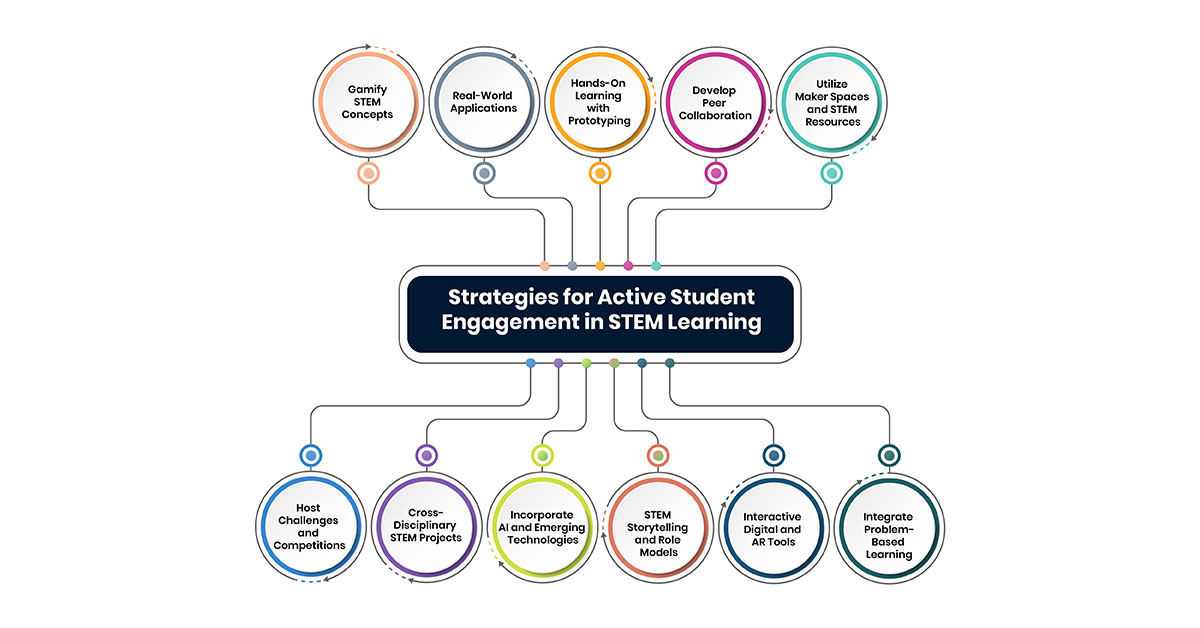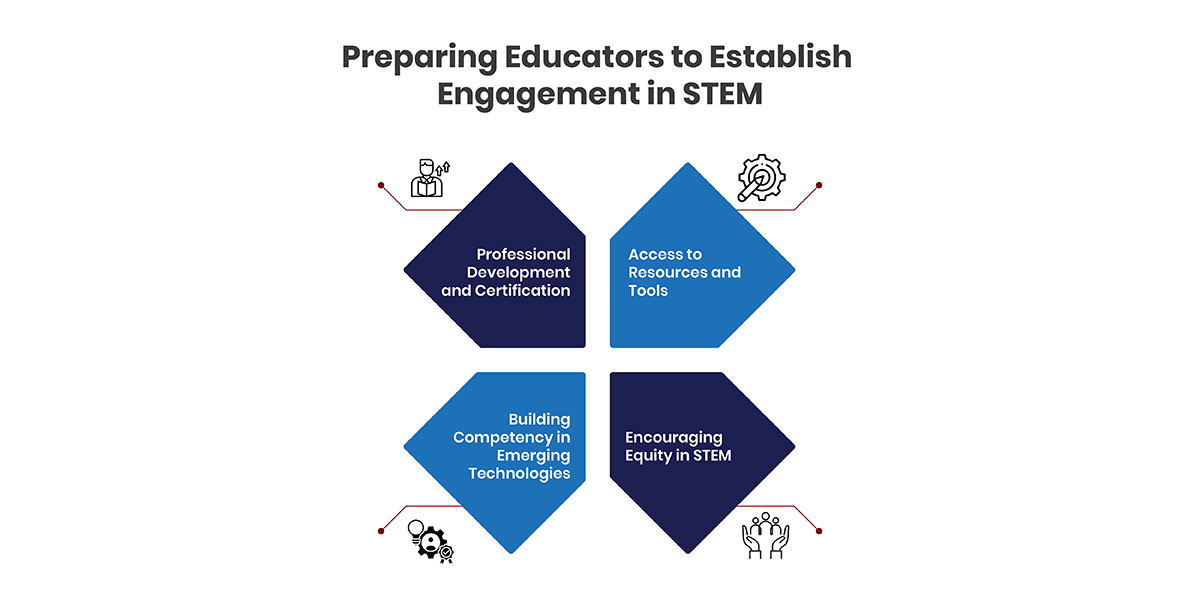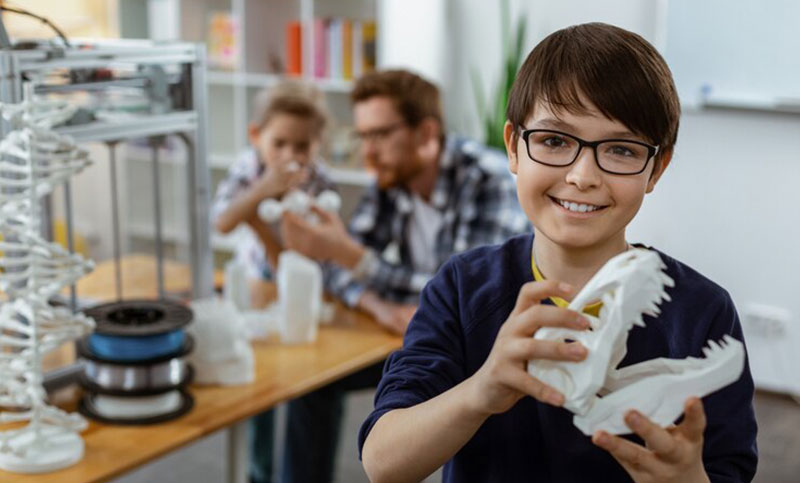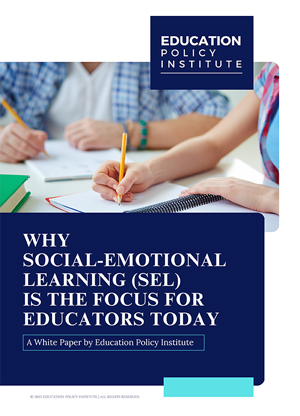Innovation is shaping the future of education, with STEM (science, technology, engineering, and mathematics) standing as the cornerstone for addressing global challenges like resource scarcity and population growth. The critical role of STEM in shaping careers is evident, with job opportunities in these fields expected to grow significantly. For educators, the challenge lies in equipping students with STEM skills while ensuring their engagement in these complex subjects. While some students naturally excel, many struggle with the foundational concepts, requiring teachers to adopt innovative strategies to spark interest and involvement.
To enhance student engagement in STEM, educators are leveraging a range of strategies to create dynamic and interactive learning environments. Approaches such as incorporating digital tools, facilitating collaborative projects, and connecting lessons to real-world applications have proven effective. These methods not only support active participation but also create deeper understanding and enthusiasm for STEM subjects. By integrating innovative teaching practices, schools can prepare students for future opportunities while ensuring they remain invested in their learning journey.
Understanding STEM Education
STEM education stands for Science, Technology, Engineering, and Mathematics. It is an interdisciplinary approach that emphasizes learning through real-world applications, critical thinking, and problem-solving. STEM education encourages students to integrate knowledge from different disciplines to address complex, real-world problems, preparing them for future careers in these key fields. This educational model builds skills such as creativity, communication, collaboration, and critical thinking, which are essential for success in an increasingly technology-driven world.
STEM education also focuses on experiential learning, where students engage in hands-on activities, projects, and research that bridge theory and practice. Through these activities, students gain a deeper understanding of the subject matter while developing a passion for learning and innovation. Moreover, STEM education is highly collaborative, promoting teamwork among students and preparing them for the collaborative nature of many professional environments. It also emphasizes diversity and inclusivity, aiming to encourage underrepresented groups in science and technology fields.
Engaging Students in STEM Learning: Strategies for Active Participation
Engaging students in STEM education requires innovative strategies that spark curiosity and encourage active participation. By blending interactive techniques, real-world applications, and collaborative opportunities, educators can make STEM subjects captivating and meaningful.
Below are some effective tactics to enhance student engagement:

-
1. Gamify STEM Concepts
Gamification transforms learning into an enjoyable and competitive activity. Digital tools like coding games engage students through quizzes, challenges, and virtual escape rooms. These platforms not only teach core concepts but also build problem-solving and critical-thinking skills in an exciting way. -
2. Real-World Applications
Relating STEM concepts to real-world challenges helps students see their relevance. Projects like designing renewable energy solutions, creating disaster management tools, or simulating economic models encourage critical thinking while demonstrating the impact of STEM on daily life. -
3. Hands-On Learning with Prototyping
Experiential learning through hands-on activities strengthens students’ understanding of abstract concepts. Prototyping using tools like 3D printers, robotics kits, and DIY experiments allows them to design, build, and test solutions, bridging theory and practice. -
4. Develop Peer Collaboration
Group projects and peer-led discussions foster teamwork and collective problem-solving. When students collaborate on experiments, teach concepts to each other, or brainstorm ideas for competitions, they build social and cognitive skills while enriching their STEM knowledge. -
5. Utilize Maker Spaces and STEM Resources
Maker spaces provide a creative environment for students to experiment with technology, coding, and engineering tools. Activities like building circuits, exploring virtual labs, or designing models in various creative platforms nurture creativity and experiential problem-solving. -
6. Host Challenges and Competitions
Organizing events like hackathons, robotics challenges, and science fairs ignites a competitive spirit among students while encouraging innovation. These platforms provide opportunities for learners to showcase their skills and develop solutions to real-world problems. -
7. Cross-Disciplinary STEM Projects
Integrating STEM with other disciplines, such as art or environmental science, provides a holistic learning experience as well as the excitement of experiencing new things in students making them fond of learning and grasping new ideas and topics. For instance, designing eco-friendly structures combines principles from physics, biology, and engineering, while emphasizing creativity and sustainability. -
8. Incorporate AI and Emerging Technologies
Teaching about emerging fields like artificial intelligence (AI), machine learning, or biotechnology can spark curiosity about the future. Platforms like Scratch or introductory Python modules make these advanced topics accessible, empowering students to create their own models or simulations. -
9. STEM Storytelling and Role Models
Sharing inspirational stories about famous scientists, engineers, or mathematicians cultivates a connection to the subject. Highlighting breakthroughs in space exploration, medical innovations, or environmental solutions encourages students to dream big. Inviting STEM professionals to share their experiences can further motivate students. -
10. Interactive Digital and AR Tools
Leveraging virtual labs, augmented reality (AR) applications, and simulation tools enhances understanding of complex topics. For instance, AR apps can allow students to visualize the solar system, conduct virtual experiments, or explore molecular structures in 3D, creating an immersive learning experience. -
11. Integrate Problem-Based Learning
Introducing problem-based learning projects allows students to address real-world issues while applying STEM knowledge. By solving challenges like reducing waste or improving transportation systems, students enhance their critical-thinking skills and gain confidence in their ability to create impactful solutions.
To promote active participation in STEM learning, integrating diverse strategies ensures students remain engaged and inspired. By embracing these techniques, educators can cultivate enthusiasm for STEM, preparing learners to tackle future challenges with creativity and confidence.
Equipping Educators to Drive STEM Engagement
To prepare educators to effectively build STEM engagement, a multifaceted approach focusing on training, resource provision, and pedagogical innovation is crucial.

-
Professional Development and Certification
Educators benefit greatly from STEM-specific professional development programs that enhance their ability to integrate interdisciplinary teaching methods. These programs help teachers design project-based learning experiences, connecting STEM subjects to real-world applications and growing critical thinking and creativity in students. -
Access to Resources and Tools
Access to advanced tools, such as robotics kits, virtual labs, and coding platforms, empowers educators to create dynamic learning experiences. Training teachers in these tools ensures they can align lessons with current technological standards, making STEM subjects more engaging and accessible for diverse learners. -
Building Competency in Emerging Technologies
STEM educators are increasingly leveraging artificial intelligence, data visualization, and virtual reality to enrich learning. Programs focusing on emerging technologies also enhance teachers' confidence and ability to innovate, inspiring students to pursue STEM careers. -
Encouraging Equity in STEM
Professional training equips educators with the skills to address barriers to participation in STEM for underrepresented groups. By personalizing lessons to diverse learning needs and creating an inclusive environment, teachers can broaden access and encourage more students to explore STEM pathways.
Equipping educators with these competencies ensures they not only teach STEM but also inspire the next generation of innovators and problem-solvers.
Measuring the Impact of STEM Programs on Student Outcomes
Measuring the impact of STEM programs on student outcomes is a crucial aspect of understanding how these initiatives influence learning and achievement. These programs are designed to enhance student engagement, critical thinking, and problem-solving skills, yet tracking their effectiveness can be challenging. Various metrics are used to gauge their impact, including academic performance, student engagement, interest in STEM careers, and the development of higher-order thinking skills. For example, research indicates that integrated STEM approaches in collaborative, hands-on environments, enhance student motivation, achievement, and interest in STEM along with developing critical skills like creativity and problem-solving. Such approaches aim to address challenges such as STEM workforce shortages and the demand for 21st-century skills.
In addition to academic assessments, surveys and self-reported data from students and teachers provide insights into the program's success in fostering interest and confidence in STEM subjects. Longitudinal studies tracking students' progress over time can also offer valuable data on the long-term effects of STEM education.
Furthermore, examining the fidelity of STEM program implementation is essential to understanding how the quality and consistency of these initiatives influence student outcomes. By carefully analyzing these factors, educators and policymakers can refine and improve STEM programs to better meet the needs of students and prepare them for future careers in science and technology fields.
Conclusion
The journey to strengthen STEM engagement in education is pivotal for preparing future generations to tackle global challenges and drive innovation. By integrating creative teaching strategies, leveraging advanced tools, and emphasizing real-world applications, educators can spark a lasting interest in STEM among students. Empowering teachers with professional development and resources is equally essential to ensure impactful delivery of STEM programs.
These collective efforts not only enhance students' learning experiences but also cultivate critical thinking, creativity, and problem-solving skills essential for thriving in a technology-driven world. A well-rounded approach to STEM education creates a foundation for students to envision and build a sustainable, innovative future.
Latest
Trends blogs
- Education and Industry Alignment: Rethinking Skill-Based Curriculum
- Education Policy Reform Amid Global Challenges and Shifting Standards
- Certification and Credentials: The New Fuel for Career Growth
- Technology in Outcome-Based Education: Driving Change in Higher Education





